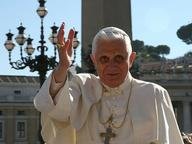Quiz Answer Key and Fun Facts
1. After a two-year impasse following Pope Nicholas IV's death in April 1292, which event caused the cardinals assembled at Perugia to surprisingly elect Pietro di Morrone, a hermit, as the new pope?
2. Why did Pietro di Morrone - a Benedictine hermit aged 79 - initially refuse to accept the papacy, only doing so after coercion?
3. Following his resignation (abdication) on 13 December 1294, five months after being crowned, what happened to Celestine V?
4. Of the various decrees Pope Celestine V issued, which one was NOT annulled by his successor Boniface VIII?
5. Born Pietro Angelerio, how did Pietro (later to become Pope Celestine V) gain the name "Pietro di Morrone"?
6. Which religious order (a branch of the Benedictines, later named after his papacy) did Pietro di Morrone found in 1244?
7. During the papacy of Clement V (5 June 1305 to 20 April 1314), who nominated Celestine V for sainthood?
8. Which author, contemporaneous with Celestine V, was allegedly responsible for casting him as a coward and ensuring that no subsequent Pope would take the name "Celestine"?
9. Following Pope Celestine V's resignation in 1294, who was the next Pope to resign (voluntarily or otherwise)?
10. Which gift did Pope Benedict XVI leave on Celestine V's glass casket during his visit to earthquake-damaged Santa Maria di Collemaggio, L'Aquila, Italy, in 2009?
Source: Author
caramellor
This quiz was reviewed by FunTrivia editor
looney_tunes before going online.
Any errors found in FunTrivia content are routinely corrected through our feedback system.
